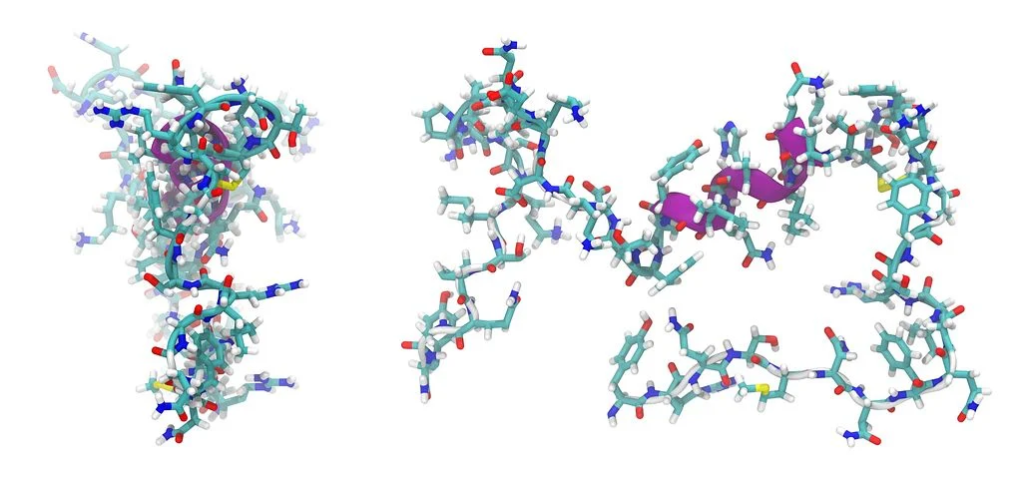Today’s article’s subject is Triptorelin’s role in hormone regulation. We will discuss if GnRH peptide has any role in hormone regulation, and if it does, then what role does it play? If you are a licensed professional interested in learning more about these multifaceted peptides, then keep reading this article; Also, as a researcher, you can buy peptides, including Triptorelin (GnRH), by visiting this website.
GnRH, also known as Triptorelin, is a peptide of a chain of 10 amino acids. It acts as an agonist for the gonadotropin-releasing hormone. Due to its structural characteristics, it may be classified as a decapeptide. It is also known as Gonapeptyl, Decapeptyl, and Variopeptyl at times.
GnRH (Triptorelin) and Its Role in the Hormone Regulation Process
According to research on animal subjects, the pituitary gland seems to be the binding site of functioning and operational mechanics for this peptide hormone. This tiny gland, which can be found at the bottom of the hypothalamus at the base of the brain, functions in a way not dissimilar to that of a central command center for an animal test subject’s endocrine system. It is in charge of regulating and controlling a variety of different processes that are carried out throughout the body. Next are examples of some of the processes that it regulates:
- Control of the growing process
- Physiological roles played by the thyroid gland
- Efforts made to alleviate suffering
- Regulation metabolism
- Temperature control and regulation
- The sexual organs and their functions
According to the findings of many studies, the functioning of GnRH (Triptorelin) permits it to cause a continuous stimulation of the pituitary gland in animals used as test subjects. Studies have shown that this functionality causes a reduction in two essential secretions that are released by the pituitary gland as a method of providing growth regulation. As it achieves this, the pituitary gland can control development better.
Luteinizing hormone is the first of these secretions to be produced. This specific hormone is responsible for regulating and controlling estrogen production in female animal test subjects. It is responsible for regulating and controlling testosterone production in male animal test subjects. It has also been shown to play an integral part in regulating and controlling the reproductive process.
The follicle-stimulating hormone is the second of these secretions that are produced. This hormone regulates and controls the development, growth, and pubertal maturity of animal test subjects, and it plays a role in all three of these processes. Its function in managing and controlling the reproductive process is comparable to that of luteinizing hormone in that it is essential to the process.

The Outcomes of Carrying Out This Process
Due to how it has been demonstrated that GnRH functions, a scientific study has determined that the peptide can be linked to several potentially beneficial processes related to adverse conditions brought on by hormones.
The first of these processes includes the potential contribution that GnRH (Triptorelin) might make to treating hormone-responsive tumors. This aspect is primarily because certain types of cancer, such as prostate and breast cancers, have been linked, even if only partially, to the presence of luteinizing hormone when it is secreted – more specifically, the estrogen and testosterone levels that the secretion is shown to influence. It has been hypothesized that GnRH, which can inhibit the production of luteinizing hormones in animal test subjects, could stop or slow the effects of cancers linked to the hormones’ secretions. This is because GnRH, also known as Triptorelin, can inhibit the production of luteinizing hormones in animal test subjects.
Additionally, the potential of GnRH (Triptorelin) to block the generation of luteinizing hormone has been hypothesized to be connected to the fact that it may help treat estrogen-dependent disorders.
In this respect, two situations stand out in particular. Endometriosis is the name of the first ailment being discussed. This condition is a gynecological condition where cells that normally line the interior of the uterus begin to emerge and multiply on the uterus’s surface. This illness is characterized by excruciating discomfort and, in some circumstances, an inability to have children.
The second issue is called uterine fibroid, and it affects the uterus. This condition is characterized by a benign tumor that develops from smooth muscle tissue and clusters within the uterus. It is the primary cause of this problem. This ailment is often characterized by significant discomfort during menstruation and unpleasant sexual encounters. Additionally, this condition may cause other uncomfortable symptoms.
A third possible relationship involving GnRH (Triptorelin) is managing premature puberty in children. This condition is the hormone-related disorder known as precocious puberty, in which pubertal development begins at an age much younger than average. It is believed that the peptide’s ability to inhibit the release of follicle-stimulating hormone, which regulates pubertal maturation in animal test subjects, can lead to a more grounded level of homeostasis within the animal test subject in terms of this form of maturation. This statement is based on the idea that the peptide has demonstrated an ability to inhibit the release of follicle-stimulating hormone.
